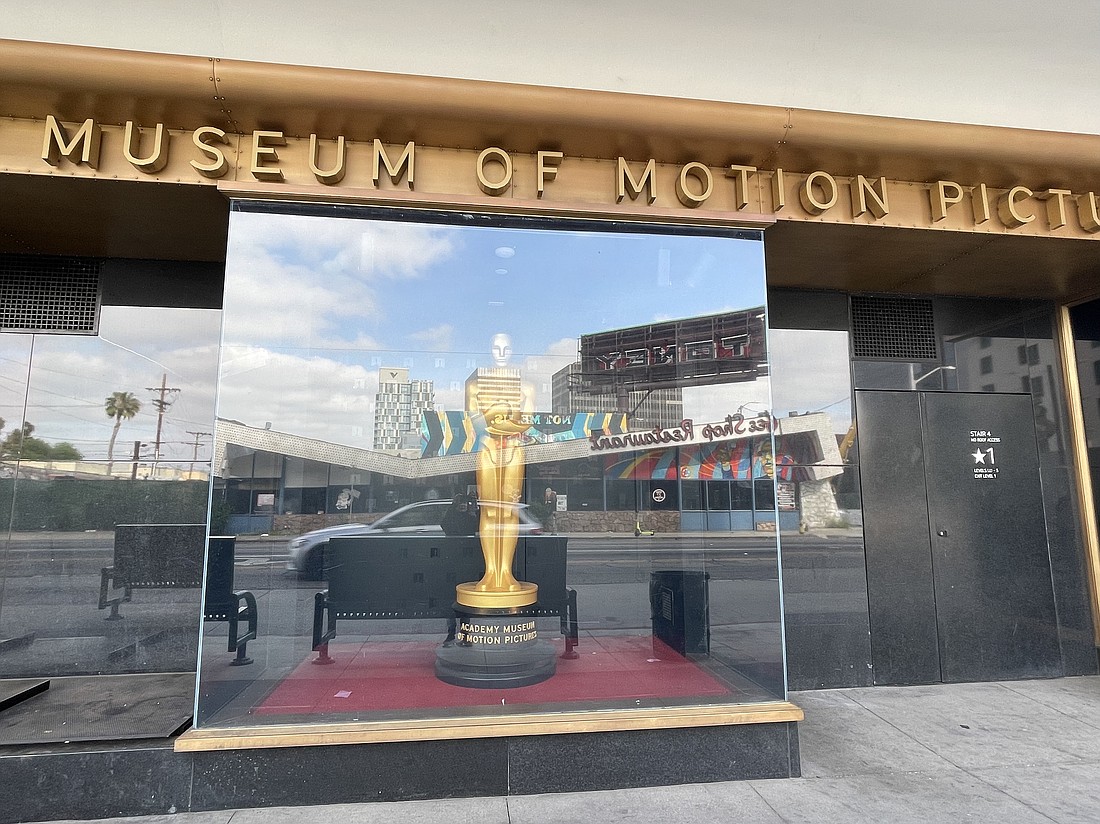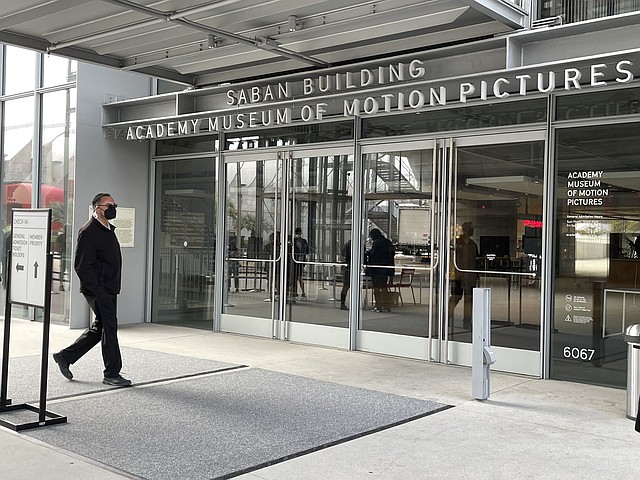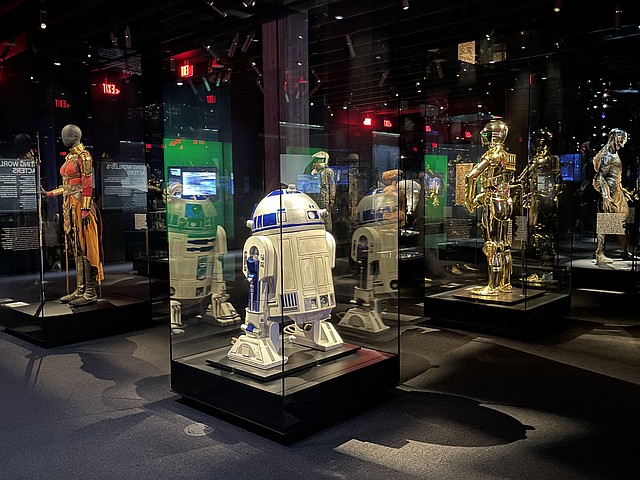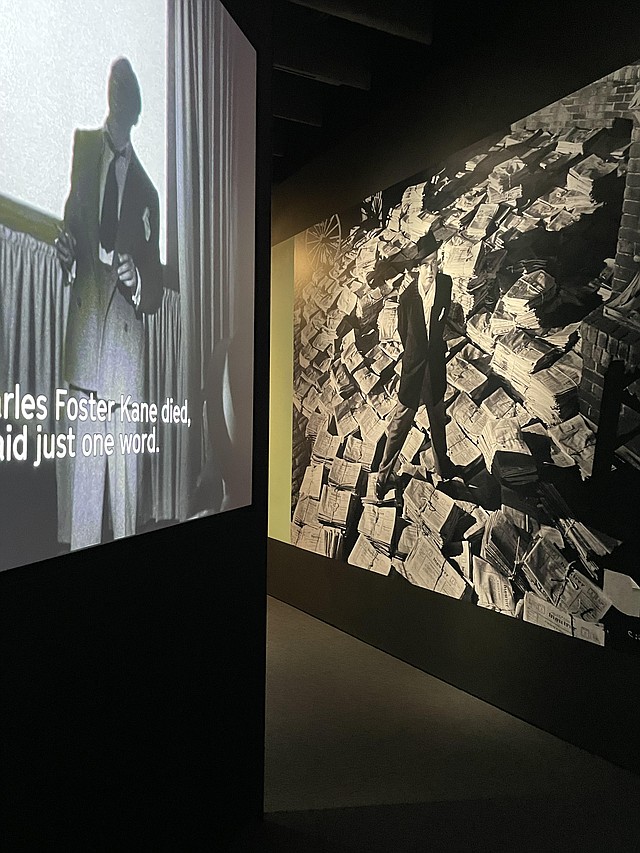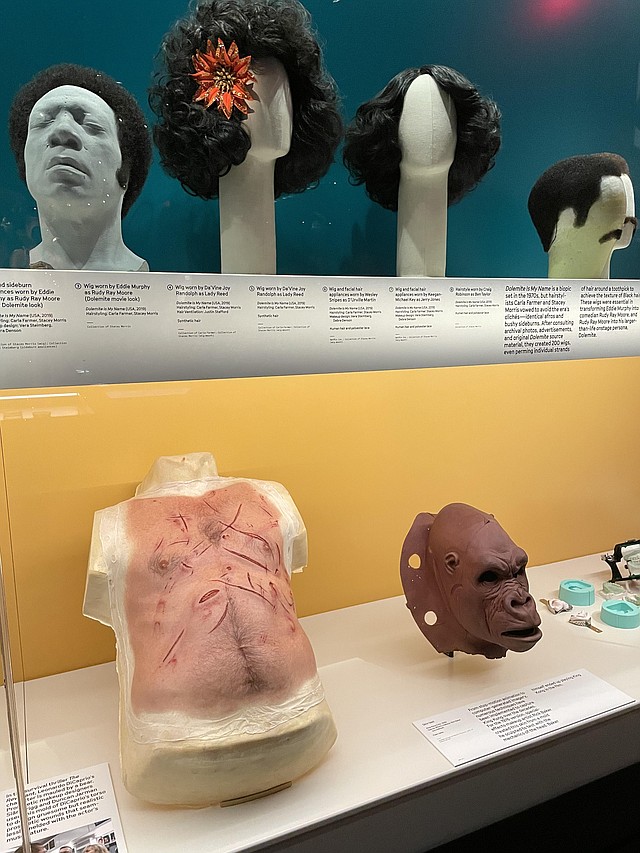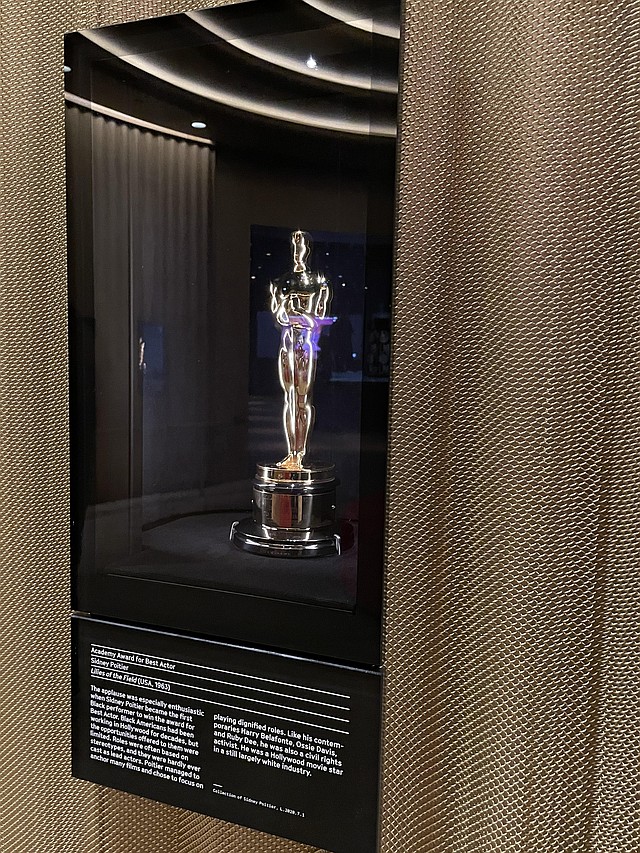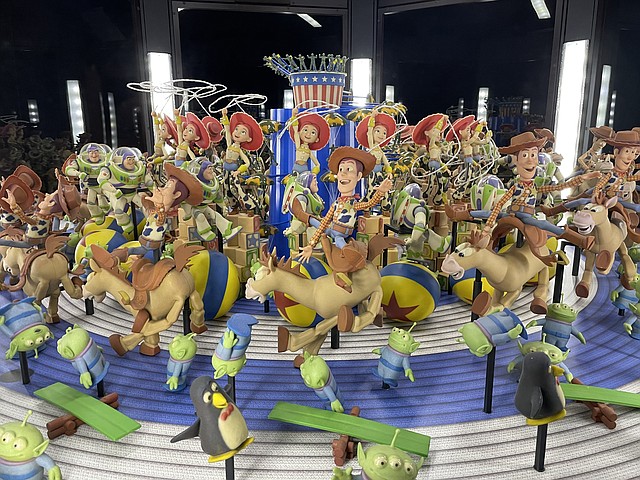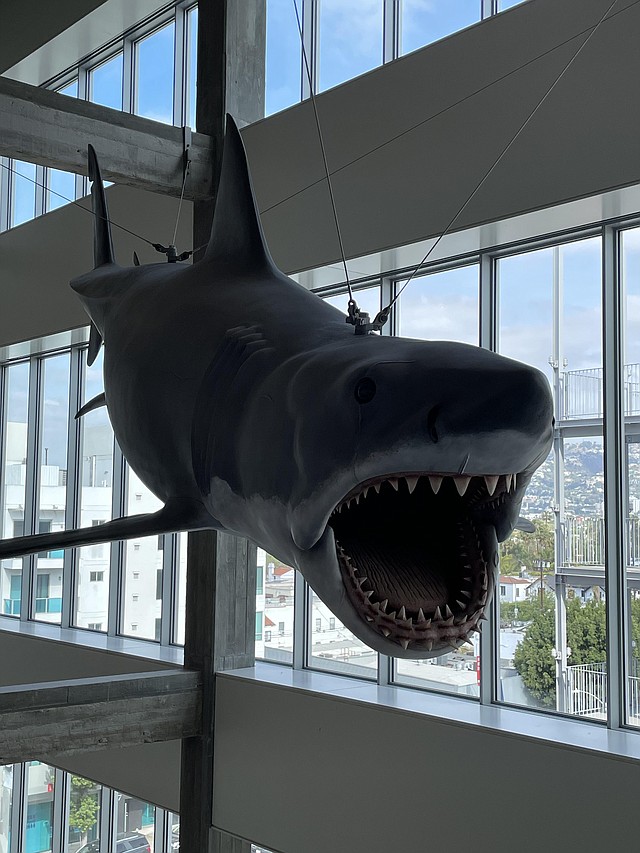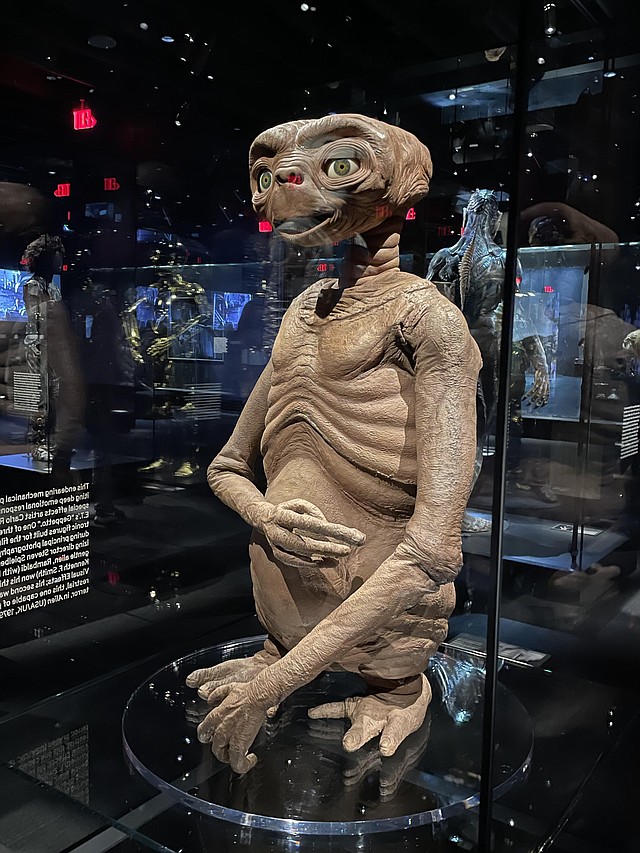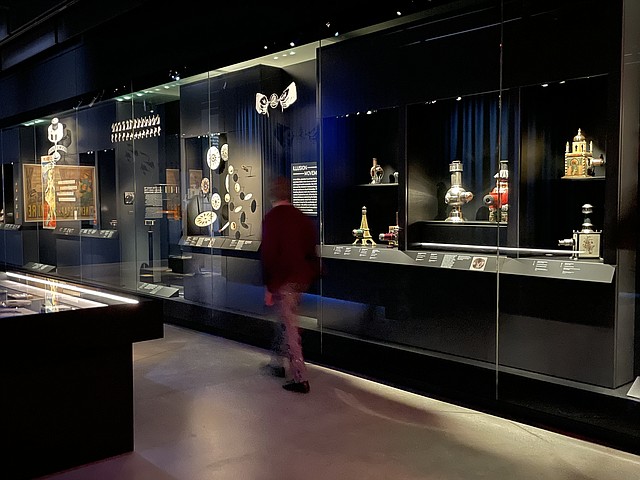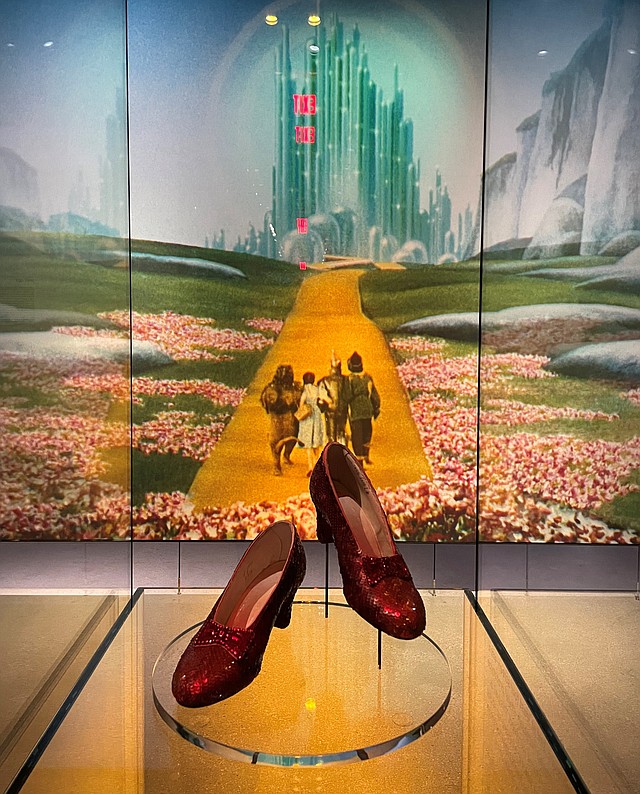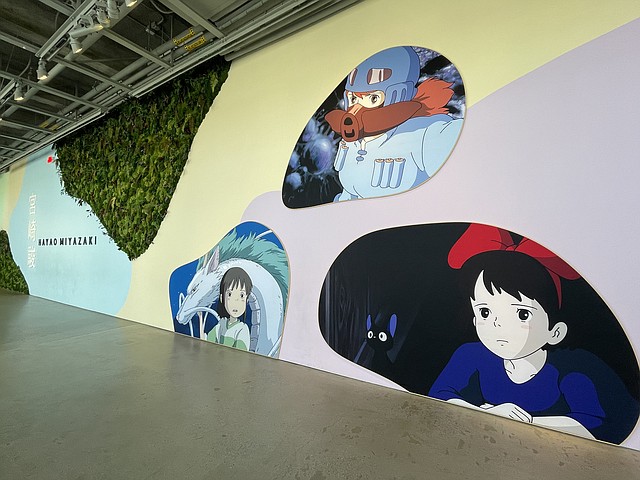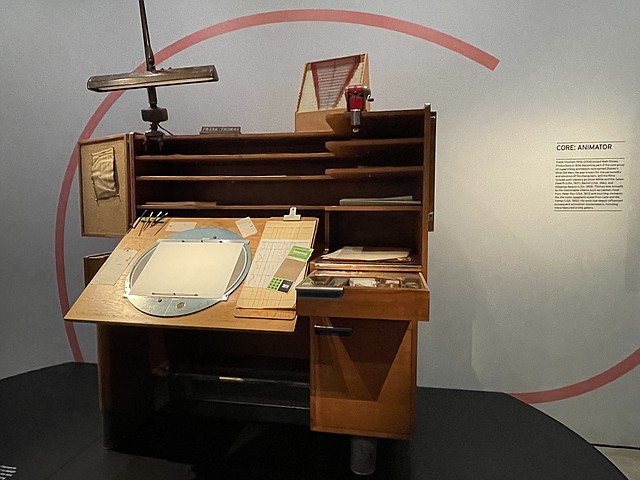Immerse yourself in the magic and power of film at the Academy Museum of Motion Pictures
Travels with Deb
August 8, 2022 at 6:00 a.m.
...by DEBBIE STONE
Movies have provided us with endless entertainment and escapism. They have also given us a window onto the world, expanding our viewpoints, and serving as inspiration and motivators for self-action.
If you’re a cinephile, you’ll be delighted to hear that the Academy Museum of Motion Pictures is open. The museum had been a long time in coming – ten years – from conception to actuality, and was eagerly anticipated by movie aficionados everywhere.Designed by award-winning, Italian architect Renzo Piano, the visually-striking, seven-story building with its can’t miss huge dome theater and bubble-top terrace sits on a stretch of L.A.’s Wilshire Blvd. along Museum Row. It joins other notable institutions such as the Los Angeles County Museum of Art, La Brea Tar Pits and Museum, Craft Contemporary Museum and The Petersen Auto Museum and is a great addition to the cultural landscape of the city.
The Academy Museum of Motion Pictures is the largest museum devoted to moviemaking in the country and explores the past, present and future of cinema. Six floors of exhibits, totaling 50,000 square-feet of gallery space, exam the art, technology, history and social impact of film.
In the multi-floor core exhibition, “Stories of Cinema, the work of several moviemakers and the impact they have had on the world are featured, from Pedro Almodóvar and Spike Lee to Orson Welles, Patricia Cardoso and Oscar Micheaux. Significant films, including narrative, documentary, animated, sci-fi and live action are highlighted, as well as the crafts that go into the creation process, such as screenwriting, costume design, hair and makeup, sound, editing, visual effects, special effects and more.
The gallery that focuses on costume, for example, informs visitors of this craft’s importance in helping to shape and define a character. Designers make sketches of costumes based on the screenplay, then either create the pieces in their studios or shop for the clothes. Assorted costumes from movies like “The Big Lebowski,” “Midsommer,” “The Wiz” and “Rocket Man” are showcased, along with commentary from accomplished costume designers.
Hair and makeup are equally important in this regard and are used to portray aging, historic realism, fantasy and glamour. Visitors are introduced to the tools and materials used by hair and makeup artists and the science behind these crafts from the creators of some of the most notable styles in cinema. You’ll see plaster life casts for Grace Kelly, Clark Gable, Mel Brooks and Don Cheadle, as well as a fascinating display on the many transformations that Charlize Theron went through for her roles in the movies, “Monster,” “Mad Max: Fury Road” and “Bombshell.”This exhibit also exams the theme of racist images around ethnic hair and skin color in film, addressing the casting of White actors to play characters who are not White. One display features containers of foundation or pancake makeup with labels like “Chinese” or “Light Egyptian.”
Sound plays another major role in movies. It’s the sound designers, editors and mixers, who create and record sounds to enhance what we see on the screen. The technology has come a long way over the years since it was first introduced in 1927 and the innovations are beyond the imagination. As evidence, just watch “Boulder Roll,” a short piece created by Skywalker Sound that features audio tracks in a scene from “Raiders of the Lost Ark.” Or enjoy the awe-inducing, 320-degree film on outer space and futurism created by famed sound man Ben Burtt.
Another popular gallery is “Academy Awards History,” where you’ll find an illustrated timeline of awards history, a collection of key Oscars and a presentation of iconic ceremony speeches and fashions. You’ll hear from such talents as Federico Fellini, Hattie McDaniel, Marlee Matlin and Sidney Poitier, as they accept their statuettes, and see Oscar gowns worn by Cher and Rita Moreno. There’s also an array of program covers, winning envelopes, congratulatory telegrams, etc., to peruse.
If you want to get a feel for the excitement of walking onto the stage at the Dolby Theatre in Hollywood and accepting your own Oscar, opt to purchase the separate ticket to “The Oscars Experience.” You’ll get to hold a real Oscar (you’ll be surprised at its weight – a hefty 8.5 pounds!) as your name is projected on a screen, while crowds of your fellow celebs applaud your accomplishment. It’s the classic fifteen seconds of fame!
“Toy Story” fans will delight in viewing Pixar’s 3D zoetrope. A zoetrope is an animation device dating back to pre-film days. It was invented to produce the illusion of motion through drawings or photos showing sequential phases of the motion. The 3D form is a modern spin on this Victoria-era contraption.
Pixar’s model brings cherished “Toy Story” characters to life, as they whirl and prance in mesmerizing fashion. There are 214 maquettes or figures that were made by a 3D printer, each posed in a sequence of postures, mounted on a turntable. As the table moves and lights flash, you’ll see Woody and his trusty horse pass in one direction, while Buzz rolls by on a Pixar ball in the other. Then there’s Jesse the cowgirl from “Toy Story 2” dancing inside a lasso, a slew of army men parachuting from up above and the three-eyed aliens playing and waving. It’s a dizzying explosion of movement and color.
The museum is a treasure trove of original items from well-known movies. You can’t miss “Bruce,” the only surviving full-size shark model cast from the original mold used on “Jaws,” which hangs from the ceiling in all its ominous glory, Arnold Schwarzenegger’s gory head model from “The Terminator,” “an original model for E.T., a pair of Bruce Lee’s nunchaku in “Enter the Dragon,” the typewriter Joseph Stefano used to write the screenplay for “Psycho,” the Rosebud sled from “Citizen Kane,” R2-D2 and C-3PO from “Star Wars,” figures from “Shrek;” the amphibian man suit from “The Shape of Water,” the lunar landing shuttle from “2001: A Space Odyssey,” and many more.
To explore the evolution of motion pictures, head to “The Path to Cinema: Highlights from the Richard Balzer Collection.” This impressive collection is widely considered to be the world’s foremost assemblage of pre-cinematic optical toys and devices. It comprises more than 9,000 objects, including magic lanterns, peepshows, shadow puppets, prints, praxinoscopes and others, dating as far back as the Ming Dynasty. Balzer spent forty years amassing such devices from Europe, Asia and America.
In the gallery “Backdrop: An Invisible Art,” you’ll be wowed by an enormous backdrop of towering Mt. Rushmore from Alfred Hitchcock’s movie, “North by Northwest.” This famous set piece makes for a great selfie opportunity, but on a much more important level, it’s used to address Rushmore’s real-life contested history among the Lakota, Cheyenne and Arapaho people. Text explains the way the monument desecrates their land. This is one example of how the museum encourages dialogue with its visitors.
Another opportunity for such conversation can be found in the museum’s detailed examination of the making of “The Wizard of Oz.” Among all the special ephemera – the ruby red slippers and gingham dress Dorothy wore, the Wicked Witch’s pointy hat and the Cowardly Lion’s mane – and history of this beloved film, painful realities are acknowledged. One of these realities involves MGM studio mogul Louis B. Mayer and his harsh treatment of Judy Garland. Mayer was reported to be very demanding of his stars and he instructed the studio to keep Garland on a destructive cycle of dieting and pills. Garland later acknowledged that she was harassed by Mayer for years.
“Hayao Miyazaki,” is one of the museum’s inaugural temporary exhibitions. It marks the first time a North American institution has held a retrospective dedicated to the work of this internationally celebrated artist and filmmaker. More than 300 objects are on display – everything from original imageboards, character designs and storyboards to layouts, backgrounds and posters. And all of Miyazaki’s animated feature films are incorporated within the exhibit.
Visitors pass through a series of richly immersive environments, such as the “Tree Tunnel” gallery, which depicts the character Mei and her journey to discovery in the movie “Totoro,” or the “Creating Characters” gallery, where Miyazaki’s many protagonists are spotlighted.
In “Creating Worlds” the focus is on the contrast between natural environments and industrial settings often found in the artist’s films, while “Making Of” details Miyazaki’s early career and the founding of his studio, along with the process of producing an animated feature.
Even if you’re not familiar with Miyazaki’s movies, it’s hard not to be impressed by his artistic visions and the vivid worlds he creates to highlight the interconnectedness of humans, nature and the spiritual realm.
Coming soon to the museum is “Regeneration: Black Cinema 1898-1971,” a groundbreaking exhibition that will take a close look at Black cinema, from its early days to after the civil rights movement, and highlight the work of independent African American filmmakers. According to the museum, the goal is “to redefine U.S. film history by elevating this underrepresented aspect of artistic production and presenting a more inclusive narrative.”
If you’re a cinephile, you’ll be delighted to hear that the Academy Museum of Motion Pictures is open. The museum had been a long time in coming – ten years – from conception to actuality, and was eagerly anticipated by movie aficionados everywhere.Designed by award-winning, Italian architect Renzo Piano, the visually-striking, seven-story building with its can’t miss huge dome theater and bubble-top terrace sits on a stretch of L.A.’s Wilshire Blvd. along Museum Row. It joins other notable institutions such as the Los Angeles County Museum of Art, La Brea Tar Pits and Museum, Craft Contemporary Museum and The Petersen Auto Museum and is a great addition to the cultural landscape of the city.
The Academy Museum of Motion Pictures is the largest museum devoted to moviemaking in the country and explores the past, present and future of cinema. Six floors of exhibits, totaling 50,000 square-feet of gallery space, exam the art, technology, history and social impact of film.
In the multi-floor core exhibition, “Stories of Cinema, the work of several moviemakers and the impact they have had on the world are featured, from Pedro Almodóvar and Spike Lee to Orson Welles, Patricia Cardoso and Oscar Micheaux. Significant films, including narrative, documentary, animated, sci-fi and live action are highlighted, as well as the crafts that go into the creation process, such as screenwriting, costume design, hair and makeup, sound, editing, visual effects, special effects and more.
The gallery that focuses on costume, for example, informs visitors of this craft’s importance in helping to shape and define a character. Designers make sketches of costumes based on the screenplay, then either create the pieces in their studios or shop for the clothes. Assorted costumes from movies like “The Big Lebowski,” “Midsommer,” “The Wiz” and “Rocket Man” are showcased, along with commentary from accomplished costume designers.
Hair and makeup are equally important in this regard and are used to portray aging, historic realism, fantasy and glamour. Visitors are introduced to the tools and materials used by hair and makeup artists and the science behind these crafts from the creators of some of the most notable styles in cinema. You’ll see plaster life casts for Grace Kelly, Clark Gable, Mel Brooks and Don Cheadle, as well as a fascinating display on the many transformations that Charlize Theron went through for her roles in the movies, “Monster,” “Mad Max: Fury Road” and “Bombshell.”This exhibit also exams the theme of racist images around ethnic hair and skin color in film, addressing the casting of White actors to play characters who are not White. One display features containers of foundation or pancake makeup with labels like “Chinese” or “Light Egyptian.”
Sound plays another major role in movies. It’s the sound designers, editors and mixers, who create and record sounds to enhance what we see on the screen. The technology has come a long way over the years since it was first introduced in 1927 and the innovations are beyond the imagination. As evidence, just watch “Boulder Roll,” a short piece created by Skywalker Sound that features audio tracks in a scene from “Raiders of the Lost Ark.” Or enjoy the awe-inducing, 320-degree film on outer space and futurism created by famed sound man Ben Burtt.
Another popular gallery is “Academy Awards History,” where you’ll find an illustrated timeline of awards history, a collection of key Oscars and a presentation of iconic ceremony speeches and fashions. You’ll hear from such talents as Federico Fellini, Hattie McDaniel, Marlee Matlin and Sidney Poitier, as they accept their statuettes, and see Oscar gowns worn by Cher and Rita Moreno. There’s also an array of program covers, winning envelopes, congratulatory telegrams, etc., to peruse.
If you want to get a feel for the excitement of walking onto the stage at the Dolby Theatre in Hollywood and accepting your own Oscar, opt to purchase the separate ticket to “The Oscars Experience.” You’ll get to hold a real Oscar (you’ll be surprised at its weight – a hefty 8.5 pounds!) as your name is projected on a screen, while crowds of your fellow celebs applaud your accomplishment. It’s the classic fifteen seconds of fame!
“Toy Story” fans will delight in viewing Pixar’s 3D zoetrope. A zoetrope is an animation device dating back to pre-film days. It was invented to produce the illusion of motion through drawings or photos showing sequential phases of the motion. The 3D form is a modern spin on this Victoria-era contraption.
Pixar’s model brings cherished “Toy Story” characters to life, as they whirl and prance in mesmerizing fashion. There are 214 maquettes or figures that were made by a 3D printer, each posed in a sequence of postures, mounted on a turntable. As the table moves and lights flash, you’ll see Woody and his trusty horse pass in one direction, while Buzz rolls by on a Pixar ball in the other. Then there’s Jesse the cowgirl from “Toy Story 2” dancing inside a lasso, a slew of army men parachuting from up above and the three-eyed aliens playing and waving. It’s a dizzying explosion of movement and color.
The museum is a treasure trove of original items from well-known movies. You can’t miss “Bruce,” the only surviving full-size shark model cast from the original mold used on “Jaws,” which hangs from the ceiling in all its ominous glory, Arnold Schwarzenegger’s gory head model from “The Terminator,” “an original model for E.T., a pair of Bruce Lee’s nunchaku in “Enter the Dragon,” the typewriter Joseph Stefano used to write the screenplay for “Psycho,” the Rosebud sled from “Citizen Kane,” R2-D2 and C-3PO from “Star Wars,” figures from “Shrek;” the amphibian man suit from “The Shape of Water,” the lunar landing shuttle from “2001: A Space Odyssey,” and many more.
To explore the evolution of motion pictures, head to “The Path to Cinema: Highlights from the Richard Balzer Collection.” This impressive collection is widely considered to be the world’s foremost assemblage of pre-cinematic optical toys and devices. It comprises more than 9,000 objects, including magic lanterns, peepshows, shadow puppets, prints, praxinoscopes and others, dating as far back as the Ming Dynasty. Balzer spent forty years amassing such devices from Europe, Asia and America.
In the gallery “Backdrop: An Invisible Art,” you’ll be wowed by an enormous backdrop of towering Mt. Rushmore from Alfred Hitchcock’s movie, “North by Northwest.” This famous set piece makes for a great selfie opportunity, but on a much more important level, it’s used to address Rushmore’s real-life contested history among the Lakota, Cheyenne and Arapaho people. Text explains the way the monument desecrates their land. This is one example of how the museum encourages dialogue with its visitors.
Another opportunity for such conversation can be found in the museum’s detailed examination of the making of “The Wizard of Oz.” Among all the special ephemera – the ruby red slippers and gingham dress Dorothy wore, the Wicked Witch’s pointy hat and the Cowardly Lion’s mane – and history of this beloved film, painful realities are acknowledged. One of these realities involves MGM studio mogul Louis B. Mayer and his harsh treatment of Judy Garland. Mayer was reported to be very demanding of his stars and he instructed the studio to keep Garland on a destructive cycle of dieting and pills. Garland later acknowledged that she was harassed by Mayer for years.
“Hayao Miyazaki,” is one of the museum’s inaugural temporary exhibitions. It marks the first time a North American institution has held a retrospective dedicated to the work of this internationally celebrated artist and filmmaker. More than 300 objects are on display – everything from original imageboards, character designs and storyboards to layouts, backgrounds and posters. And all of Miyazaki’s animated feature films are incorporated within the exhibit.
Visitors pass through a series of richly immersive environments, such as the “Tree Tunnel” gallery, which depicts the character Mei and her journey to discovery in the movie “Totoro,” or the “Creating Characters” gallery, where Miyazaki’s many protagonists are spotlighted.
In “Creating Worlds” the focus is on the contrast between natural environments and industrial settings often found in the artist’s films, while “Making Of” details Miyazaki’s early career and the founding of his studio, along with the process of producing an animated feature.
Even if you’re not familiar with Miyazaki’s movies, it’s hard not to be impressed by his artistic visions and the vivid worlds he creates to highlight the interconnectedness of humans, nature and the spiritual realm.
Coming soon to the museum is “Regeneration: Black Cinema 1898-1971,” a groundbreaking exhibition that will take a close look at Black cinema, from its early days to after the civil rights movement, and highlight the work of independent African American filmmakers. According to the museum, the goal is “to redefine U.S. film history by elevating this underrepresented aspect of artistic production and presenting a more inclusive narrative.”
